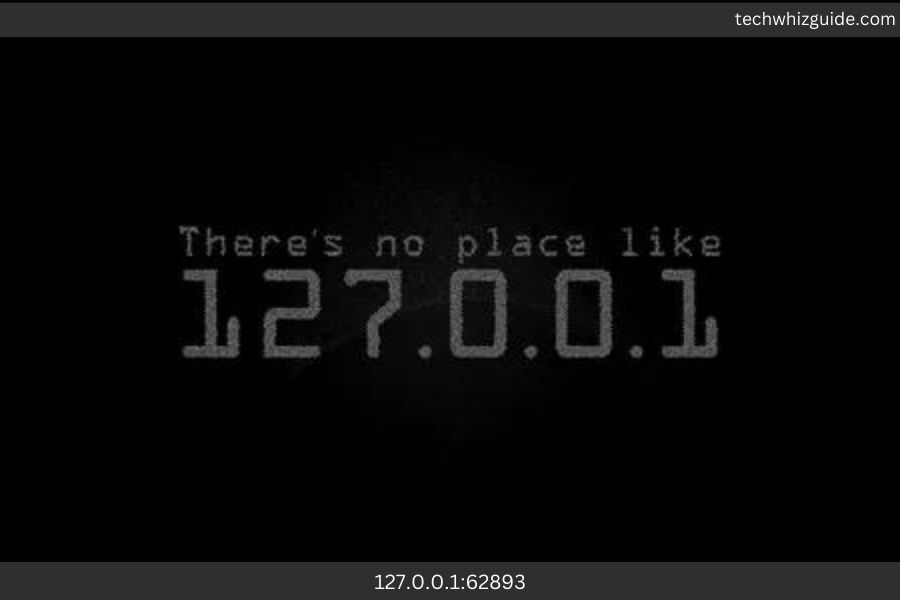Have you ever stumbled upon the cryptic string “127.0.0.1:62893” while browsing your computer’s network settings or troubleshooting a connection issue? If so, you’re not alone. This seemingly random address often sparks curiosity and confusion. In this article, we’ll unravel the mystery surrounding 127.0.0.1:62893, exploring its purpose, potential implications, and what it means for your online security.
What is 127.0.0.1:62893?
Before we get too deep into the weeds, let’s break down this cryptic address.
127.0.0.1: This part is known as the “loopback address” or “localhost.” It’s your computer’s way of saying, “Hey, I’m talking to myself here.” It’s like a mirror for your network, reflecting data to your machine.
62893: This number is a port. Think of it as a specific doorway on your computer. Different applications and services use different ports to communicate. Port 62893 is a bit of a wildcard; it could be used by anything from a small-time app to a larger software package.
So, when you see 127.0.0.1:62893, it means something on your computer is trying to communicate with something else on your computer through port 62893. Got it? Good. Let’s move on.
What is a Port?
Before, understand 127.0.0.1:62893 guide, we need to know about it’s ports. Ports are virtual channels that allow different applications on a computer to communicate with each other. Each port is assigned a unique number, ranging from 0 to 65535. Some ports are reserved for specific services, such as port 80 for HTTP (web traffic) or port 22 for SSH (secure shell). Others are left open for custom applications or services.
What Does Port 62893 Mean?
Now, let’s get to the heart of the matter: What does port 62893 signify? Unfortunately, there’s no definitive, universally accepted answer. The specific meaning of port 62893 can vary depending on several factors, including:
- Operating System: Different operating systems may use port 62893 for different purposes or not at all.
- Applications: Certain applications might utilize port 62893 for internal communication or to provide specific services.
- Custom Configurations: Network administrators can assign port 62893 to any service or application they choose.
Potential Uses of Port 62893
While there’s no single, definitive meaning, here are some potential uses of port 62893:
- Custom Applications: A developer or organization might use port 62893 for a proprietary or internal application.
- Networking Protocols: Some networking protocols or services may utilize port 62893 for specific functions.
- Security Tools: Security software or firewalls might use port 62893 for internal monitoring or communication.
Common Uses of 127.0.0.1:62893
While the exact purpose of port 62893 can vary depending on the software or application using it, here are some common scenarios:
- Local Web Servers: Many web development tools and frameworks use port 62893 to run local web servers for testing and development purposes. This allows you to view and interact with your website or web application without needing to publish it online.
- Custom Applications: Some custom-built applications may use port 62893 for internal communication or to provide specific services.
- Network Protocols: Certain network protocols might utilize port 62893 for specific functions.
Why We See 127.0.0.1:62893?
Now, the million-dollar question: why would you ever see 127.0.0.1:62893? Well, there are a few possibilities:
Debugging: Developers often use localhost and specific ports to test their applications without exposing them to the broader internet. It’s like a private playground for coders.
Network Applications: Some software might use this address for internal communication. Think of it as a backstage pass for your computer’s programs.
Errors: Sometimes, this address pops up when something goes wrong. It could be a misconfigured app or a network hiccup.
Potential Issues with 127.0.0.1:62893
While 127.0.0.1 62893 isn’t inherently evil, it can sometimes cause problems. For example:
Blocked Connections: If something tries to connect to an external server but gets redirected to 127.0.0.1:62893, you’ll probably get an error. It’s like trying to order pizza and ending up with a salad.
Resource Hogging: A rogue application using this address could eat up your computer’s resources, slowing things down. It’s like having a party guest who won’t leave.
Security Risks: In rare cases, malicious software might use this address to hide its tracks. It’s like a sneaky burglar using a secret passage.
Troubleshooting 127.0.0.1:62893 Issues
If you’re seeing this address and experiencing problems, here are a few things you can try:
Check Your Firewall: Make sure your firewall isn’t blocking necessary connections.
Restart Your Computer: Sometimes, a simple reboot can fix weird issues.
Update Your Software: Outdated software can cause all sorts of problems.
Scan for Malware: It’s always a good idea to run a malware scan, just in case.
Consult the App’s Documentation: If you know which app uses this address, check its documentation for troubleshooting tips.
Final Notes
So, there you have it. The mysterious 127.0.0.1 62893 unmasked. While it might seem complex, understanding the basics can help troubleshoot issues and keep your computer running smoothly. Remember, if you need clarification, feel free to seek help from a tech-savvy friend or professional.
By understanding the basics of IP addresses, ports, and the loopback address, you can gain a better grasp of 127.0.0.1:62893 and its implications. If you encounter this port while troubleshooting or exploring your network, remember to approach it with caution and investigate its purpose carefully.












